There's an ever-growing set of marketing and sales tools that can get confusing, conflicting and costly.
Scott Brinker, founder of the ChiefMartec blog, annually updates this image of the Marketing Technology Landscape, to depict the challenge that many CMOs deal with on a regular basis.

My guide for managing your team's B2B SaaS sales, marketing, churn, and growth metrics to get your go-to-market on track.
READ ARTICLE
In the latest version from 2022, you can see an island called “CDP” (Customer Data Platform) that’s starting to grow. This is a specific software category to tie together all the other CRM like systems that are used by marketing, sales and customer success teams.
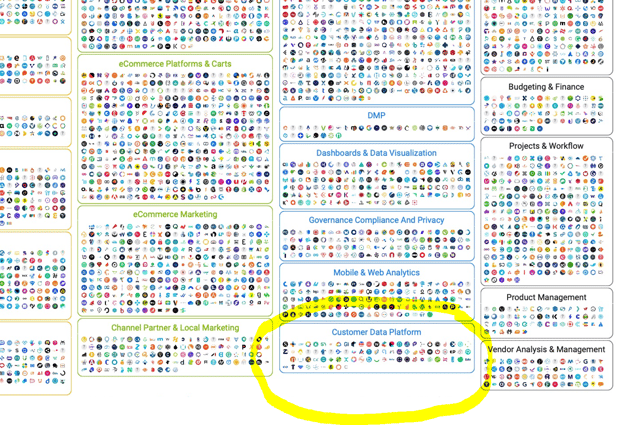
This not only looks like a morass, it's a part of marketing where marketing leaders, teams and the SaaS companies they work for can really get stuck.
The need for connectedness in the 21st century
Your company has a couple of software systems that allow it to operate in the 21st century.
You have accounting or ERP software to manage all your finances and things like inventory and invoices. Your HR system probably includes managing payroll, hiring, personal reviews, and goal setting. Most of these solutions are completely integrated.
Your HR system combines performance reviews with potential compensation increases, with your payroll system. Your accounting system includes accounts receivable, accounts payable, and your general ledger, amongst other things. That's how you expect it to be. You probably can’t imagine a world where your accounts receivable and accounts payable would have their own general ledger solutions.
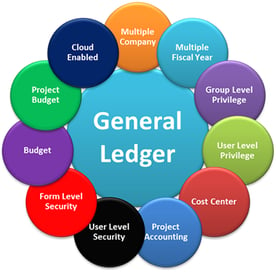
However, in our world of B2B SaaS Go-to-market enablement, it’s very common for marketing, sales and customer service teams to have multiple, disconnected CRM systems. While the promise in the early nineties of the early CRM systems was to have one record for every individual we did business with, that tied together all their interactions with us and what information we had collected, it's still difficult to realize that original dream of personalized ‘1-to-1 marketing’.
If you're a frequent guest of a hotel chain and realize they still struggle just to remember what your pillow preference is, you know what I mean.
In the graphic below, you see the “vision” of one of the early CRM market leaders, Siebel, to have one CRM database to support the complete customer journey:
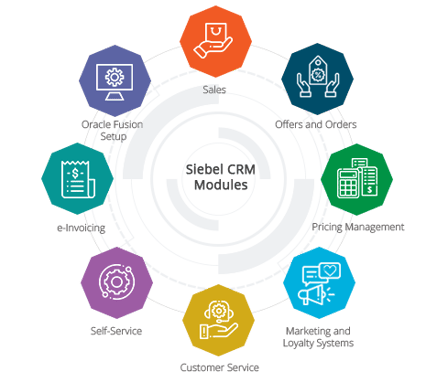
The harsh reality is that almost 30 years later, most companies still have not realized the above ideal architecture. Most marketing teams have their own system for marketing automation (Pardot, Eloqua, Adobe), sales has their opportunity management system (Pipedrive, SugarCRM, Salesforce) and the customer success (or customer service) team has another CRM to track helpdesk tickets, like Zendesk.
The composable enterprise is for enterprises only
In the fall of 2020, Gartner introduced the term “Composable Business”, arguing that organizations need the agility to combine multiple technologies quickly and be flexible to respond to ever-changing needs. This is very true, especially for larger companies. A small software company though, with a new marketing team, cannot deal with multiple CRM systems that have to be connected by expensive database experts. They need one single “commercial operating system” to work “out of the box”.
While “hidden” behind beautiful marketing terms, the large MarTec (Marketing Technology) software providers are offering a spaghetti of different CRM systems. For example, Salesforce Sales Cloud & Salesforce Marketing Cloud.
The latter are actually different CRM systems that Salesforce acquired (Pardot and Exact Target), and while they integrate with the Sales CRM database, they are actually different CRM systems with different data models that need integration.
Adobe Marketing Cloud is another example of multiple systems (especially following their acquisition of Marketo) that can lead you to need developers in addition to your marketers to connect everything together. Eloqua is another system that only can be patched together and made to work with a lot of expensive consulting labor.
Whenever you end up with different CRM systems across the various stages of the customer journey, you run the risk of long implementation projects that are never really finished, and under deliver on the promise of a holistic, simple, unified data platform that comes close to the original 1-1 Marketing dream, and the picture of the Siebel system earlier.
The picture below shows an example of what we sometimes find at companies that have marketing and sales teams that are a couple of years old and have been adding tools without a real architecture, which all brought their own CRM components.
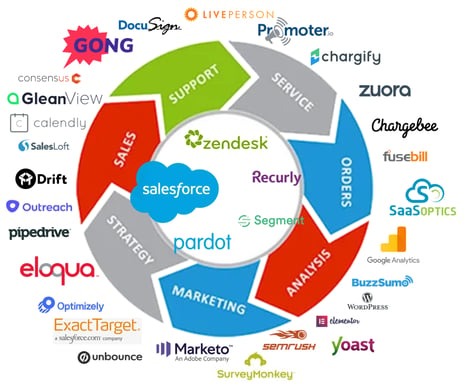
Why use one CRM for your entire Customer Journey
While it’s impossible for most companies to reduce the number of tools they use to less than 5, most B2B SaaS companies should be able to get pretty close.
Ideally, a small- to midsize B2B SaaS Company does not have multiple CRM systems. I like to use Hubspot for the marketing, sales and customer service functions, since it was built from the ground up with one CRM system that extends into the Website Management platform (CMS).
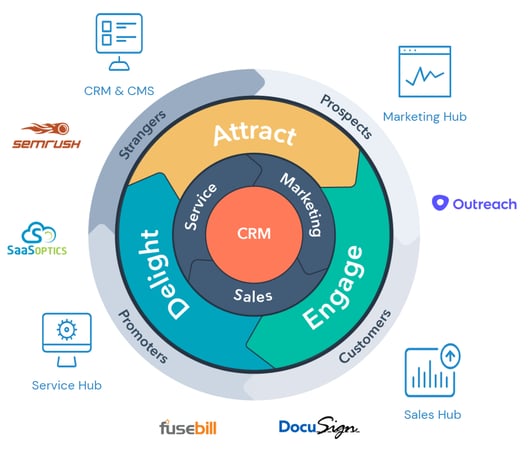
As Hubspot has grown, it now includes most of the tools from the previous picture “out of the box”, reducing the number of integrations needed.
While Hubspot is by no means perfect, I believe it’s the most complete solution right now for B2B SaaS Companies between the startup phase, up to at least $20M ARR. As the complexity grows, Hubspot might get a bit “tight” for larger companies.
The benefit of not dealing with integrating multiple CRM systems has saved our clients months, sometimes years of working on the wrong system and having to rip it out at some point and start over. The cost of not having a reliable marketing dashboard, or having to build manual reporting integrations is high for a small marketing team, and Hubspot solves most of that.